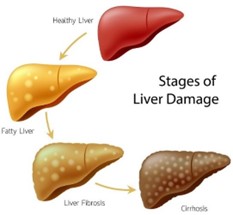Before administering a newly prescribed dose of terbinafine HCL to a client with a fungal toenail infection, which assessment finding is most important for the nurse to address?
Reported history of alcoholism.
Toenails appear thick and yellow.
White blood cells count of 8,500/mm3 or 85 x 109 /L (SI).
Employed as a construction worker.
The Correct Answer is A
Terbinafine HCL is primarily metabolized by the liver, and a history of alcoholism may indicate liver dysfunction or damage, which could affect the metabolism and clearance of the drug. The nurse should assess the client's liver function, including liver enzymes, bilirubin levels, and albumin levels, before administering terbinafine HCL.
While options b, c, and d may be important assessment findings, they are not as crucial as a history of alcoholism when it comes to administering terbinafine HCL.
The thick and yellow toenails (option b) are typical symptoms of a fungal toenail infection, which is the reason for prescribing terbinafine HCL.
The white blood cell count (option c) is within normal range.
Being employed as a construction worker (option d) does not have a direct impact on the use of terbinafine HCL.

Nursing Test Bank
Naxlex Comprehensive Predictor Exams
Related Questions
Correct Answer is B
Explanation
Sumatriptan succinate is a medication used to treat migraine headaches by narrowing blood vessels in the brain. It is important to determine if the client has a history of coronary artery disease before administering the initial dose because the medication can also cause narrowing of the coronary arteries and potentially lead to a heart attack or other cardiac events.
Type 2 diabetes mellitus (a), seasonal allergic rhinitis (c), and irritable bowel syndrome (d) are not directly related to the use of sumatriptan succinate. However, it is still important to consider the client's medical history and overall health status when prescribing or administering any medication.

Correct Answer is C
Explanation
Ipratropium is a medication used to treat chronic obstructive pulmonary disease (COPD)1. When using an ipratropium inhaler for the first time or if it has not been used for a while, it is important to prime the inhaler by spraying it into the air away from your face1. However, the inhaler only needs to be primed with 2 sprays, not 71. If the client primes the inhaler with 7 pumps, it indicates that additional teaching is needed.

Whether you are a student looking to ace your exams or a practicing nurse seeking to enhance your expertise , our nursing education contents will empower you with the confidence and competence to make a difference in the lives of patients and become a respected leader in the healthcare field.
Visit Naxlex, invest in your future and unlock endless possibilities with our unparalleled nursing education contents today
Report Wrong Answer on the Current Question
Do you disagree with the answer? If yes, what is your expected answer? Explain.
Kindly be descriptive with the issue you are facing.
